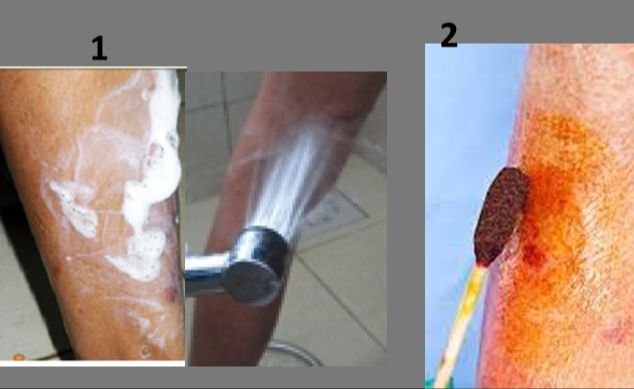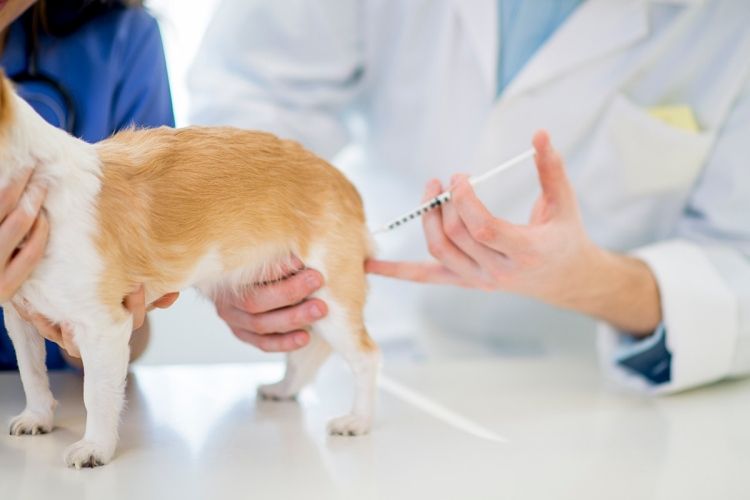Introduction
Dog bites are a major public health problem worldwide. According to the Centers for Disease Control and Prevention (CDC), there are an estimated 4.5 million dog bites each year in the United States alone, with one in five bites becoming infected (Source). Children are the most common victims of serious bites, and bites to the head and neck areas of small children are especially dangerous.
The World Health Organization (WHO) has developed guidelines on the management of dog bites in humans in order to reduce the global burden of rabies and other consequences of dog bites. The purpose of these guidelines is to provide evidence-based recommendations for the prevention, assessment and management of dog bites in humans of all ages, in all settings.
The guidelines cover all aspects of care including first aid, wound management, antimicrobial use, tetanus prophylaxis, rabies prevention, and follow-up. Proper treatment of dog bites is essential to prevent infection and other complications.
Assessing the Injury
When assessing a dog bite injury, there are several important factors to consider:
Look at the location, depth, and bleeding of the wound. Measure the length and depth of the wound and classify it as an abrasion, puncture, laceration, or avulsion (Clinical Management of Dog Bite Injuries).
Consider the risk of rabies. Inspect the wound thoroughly and obtain information about the status of the dog to determine if rabies prophylaxis may be needed (Animal Bites Evaluation and Management).
Note the time of injury. Document when the bite occurred, as this can help determine the timeline for infection risk and rabies prophylaxis (Dog Bites PMC).
Cleaning the Wound
It is important to properly clean the wound after a dog bite to help prevent infection. The first step is to wash the wound with mild soap and warm running water for 3-5 minutes to flush out saliva, dirt, and debris (1). Do not scrub the wound, just gently rinse. Saline solution can also be used to irrigate the wound and remove contaminants. Be sure to pick out any visible debris, dirt or hair in the wound with tweezers. Do not use hydrogen peroxide or alcohol on the bite as they can damage tissue and delay healing (2). After thoroughly flushing, pat the area dry with a clean towel.

Sources:
(1) https://www.mountsinai.org/health-library/selfcare-instructions/animal-bites-self-care
(2) https://westcoastwound.com/wound-care-after-an-animal-bite/
Closing the Wound
Whether to close a dog bite wound or leave it open is a debated topic. According to one study published in PubMed, “Primary suturing of wounds caused by dog bites resulted in similar infection rate compared to non-suturing” (https://pubmed.ncbi.nlm.nih.gov/23916901/). However, the American Academy of Family Physicians states that “Primary closure of animal bites at the time of injury is safe in select cases such as low-risk wounds on the face, trunk, or scalp in patients who present within eight to 12 hours of injury” (https://www.aafp.org/pubs/afp/issues/2018/0501/od2.html).
In general, small and medium-sized wounds on the trunk or scalp can be closed with sutures or staples if they are less than 12 hours old and there is no sign of infection. Facial wounds should usually be closed due to cosmetic concerns. Large or gaping wounds are often left open to heal. Tape or tissue glue can sometimes be used instead of sutures on small clean wounds.
The decision to suture a dog bite should be made on a case-by-case basis, evaluating the wound location, size, depth, presence of infection, and time since injury. Leaving wounds open may result in slower healing but allows drainage. Follow-up care is essential to monitor for signs of infection.
Antibiotics
Antibiotics are often recommended for dog bites that break the skin to prevent infection. According to the American Academy of Family Physicians, antibiotics should be given if the bite is less than 8 to 12 hours old, there is a high risk of infection, the bite is on the hand or foot, the bite punctured the skin, the wound is moderate to severe, or the victim has a compromised immune system.
Some commonly prescribed antibiotics for dog bites include:
- Amoxicillin-clavulanate – This is often the first-line oral antibiotic for dog bites according to Medscape. The clavulanate component helps cover some beta-lactamase producing bacteria.
- Doxycycline – A broad spectrum antibiotic that may be used if the victim is allergic to penicillin.
- Clindamycin – Used in combination with fluoroquinolones or trimethoprim-sulfamethoxazole for adults.
- Cephalexin – Another first-line oral antibiotic option.
- Metronidazole – Added to cover anaerobic bacteria, often paired with amoxicillin-clavulanate.

The choice of antibiotic depends on allergy history, the type of wound, location on the body, and risk factors. The duration of antibiotic treatment is typically 3-14 days depending on wound severity. Close follow-up is recommended to monitor for signs of infection.
Tetanus Prevention
The Centers for Disease Control and Prevention (CDC) recommends getting a tetanus vaccine called a tetanus toxoid (TT) if it has been more than 5 years since the last tetanus shot (Baddour). The tetanus toxoid vaccine provides protection against tetanus infection which can occur after a dog bite. Tetanus is caused by bacteria that can enter the body through a puncture wound, like a dog bite.
The tetanus toxoid vaccine is ideally administered as soon as possible after a dog bite, but can still be effective if given within 3 days of the bite (Facemaker). Getting the vaccine quickly helps prevent the potential onset of tetanus infection. If it has been over 5 years since the last tetanus toxoid vaccine, the CDC recommends getting a booster shot even after minor dog bites as a precaution against tetanus (Jenkins).
Rabies Prevention
After a dog bite, it’s important to assess the risk of rabies transmission. The CDC states that “no person in the United States has ever contracted rabies from a dog, cat or ferret held in quarantine for 10 days.”1 Therefore, if the dog that bit you is available for a 10 day observation period and shows no signs of rabies, the rabies risk is very low.
However, if the dog is stray, aggressive, sick, or unavailable for observation, rabies post-exposure prophylaxis may be recommended. This consists of the rabies vaccine and rabies immunoglobulin. The rabies vaccine stimulates your immune system to produce antibodies against the rabies virus. Rabies immunoglobulin provides immediate, short-term protection until the vaccine becomes effective. These should be administered as soon as possible after the bite per CDC guidelines.

The decision to administer rabies post-exposure prophylaxis will depend on several factors like the type of exposure and the rabies risk associated with the geographic area. Consulting with a doctor is important to appropriately assess the rabies risk following a dog bite.
Pain Management
Proper pain management is important for recovering from a dog bite. According to the Choice Pain website, over-the-counter medications like acetaminophen (Tylenol) or ibuprofen (Advil) can help alleviate pain and reduce inflammation (Tips for Recovering From a Dog Bite). The My CPR Certification Online site also recommends using these types of over-the-counter pain relievers for dog bite pain management (Basic First Aid Tips For A Dog Bite Treatment).
For more severe pain, prescription medications may be necessary. Oral opioids like hydrocodone are sometimes prescribed, but should be used cautiously. Topical anesthetics like lidocaine creams or gels can also help numb pain at the wound site. Injectable anesthetics may be used for wound care or suturing. Overall, a combination of over-the-counter analgesics and prescription medications under medical supervision can provide effective pain relief during the healing process.
Follow-up Care
It’s important to monitor the wound for signs of infection after a dog bite. According to the CDC, signs of infection include increased pain, swelling, redness, oozing, or foul-smelling discharge from the wound [1]. If any of these occur, contact your doctor right away.
The American Family Physician recommends follow-up visits at 24 and 48 hours after the initial treatment [2]. This allows your doctor to check if antibiotics are working properly or if the wound is showing signs of infection. Follow-up visits may continue until the wound is completely healed, which can take several weeks or longer depending on severity.
Prevention
Preventing dog bites starts with understanding dog behavior. Dogs may bite when they feel threatened, so it’s important not to make them feel cornered or unsafe. According to the ASPCA, key tips for dog bite prevention include:
Socialize your dog early and often so they learn how to interact properly with people. Gradually expose them to new situations, people, and other animals in a safe, controlled way so they gain confidence (ASPCA).
Never leave infants or young children alone with dogs. Closely supervise all interactions between dogs and kids (KidsHealth).
Don’t approach unfamiliar dogs without owner consent, especially if they are injured, sleeping, eating, or caring for puppies. Avoid direct eye contact, which can be seen as threatening (AVMA).
If a dog seems aggressive, don’t run or scream. Stay calm, avoid sudden movements, and slowly back away. Fighting or striking the dog could provoke an attack (ASPCA).
If bitten, immediately wash the wound with soap and water. Seek medical care to determine if antibiotics or a tetanus shot are needed to prevent infection (KidsHealth).

